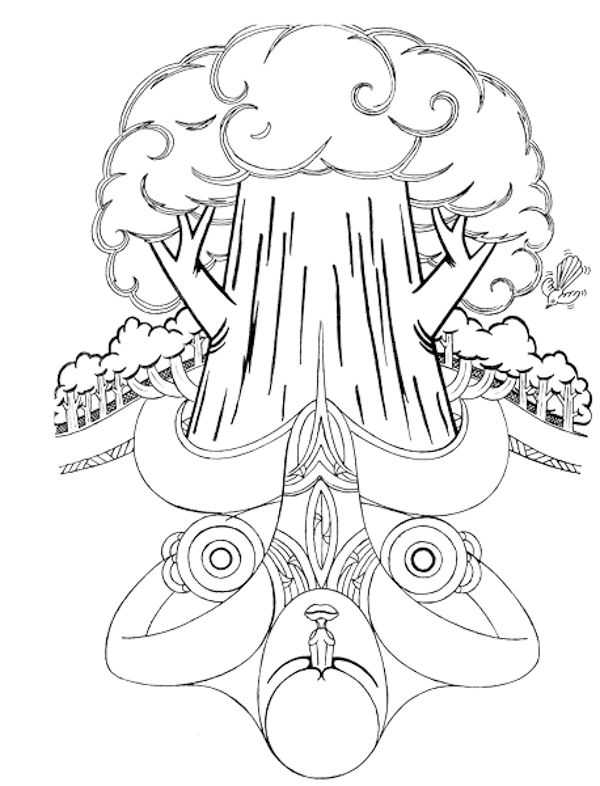
Tānemahuta, atua associated with the forest and all that dwells in it, having qualities that include shelter, strength, and diversity of life.
Designing a holistic curriculum
Choosing to tackle the idea of ecological building and design within the science curriculum is courageous and Wellington East Girls College teacher Katherine Haines didn’t stop there. She wanted her 40 students (year ten and eleven) in 2020 to think holistically about ecological design, taking into consideration how buildings can work with nature and enhance the health and well-being of the whole community.
Incorporating Mātauranga Māori
The students engaged in thinking about how buildings could acknowledge and be part of the history and natural features of the land. In thinking about the people that are mana whenua, and the people that would use the building and how, they were asked to consider kaitiakitanga, manaakitanga and to ensure cultural safety was part of their design scope.
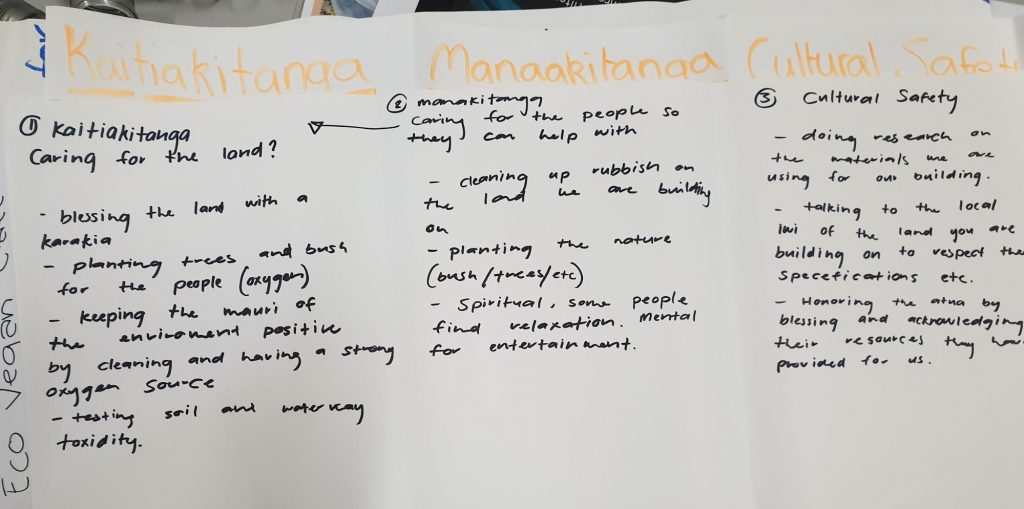
Building understanding of kaitiakitanga, manaakitanga and cultural safety.
To gain an understanding of these concepts, they consulted with mana whenua through their Enviroschools Facilitator. Consulting in this way also helped them learn about the important geographical features in their design area.
Using culturally relevant decision making tools
The students were asked to design a community centre. They were encouraged to use a mauriOmeter to evaluate the impact of their scientific inquiry on the mauri of the place or object. This tool was developed by Te Kipa Kepa Brian Morgan of Auckland University as an alternative to other decision support tools.
The mauriOmeter adds significant depth to decision making tools such as cost benefit analysis, by including the impact a design might have on cultural indicators such as food and resource gathering, use of traditional knowledge and sacred and spiritual places. Importantly, it also asks the evaluator to think not only about the impact now, but also in 100 years time.
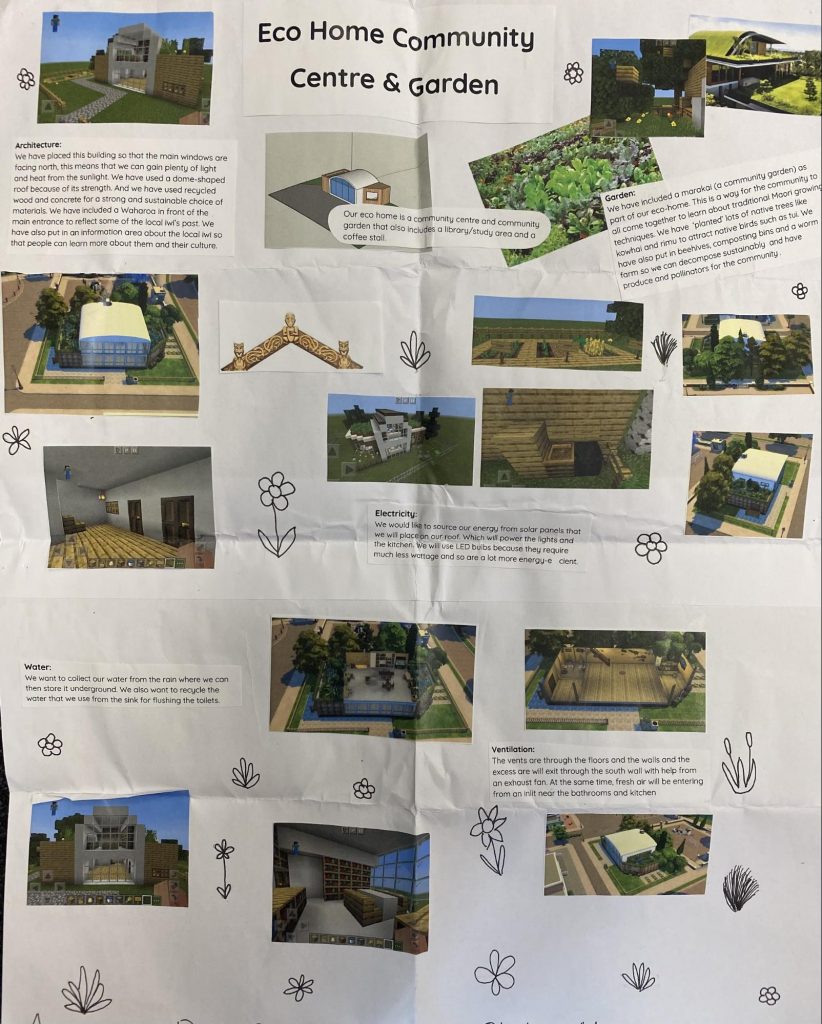
Student design ideas
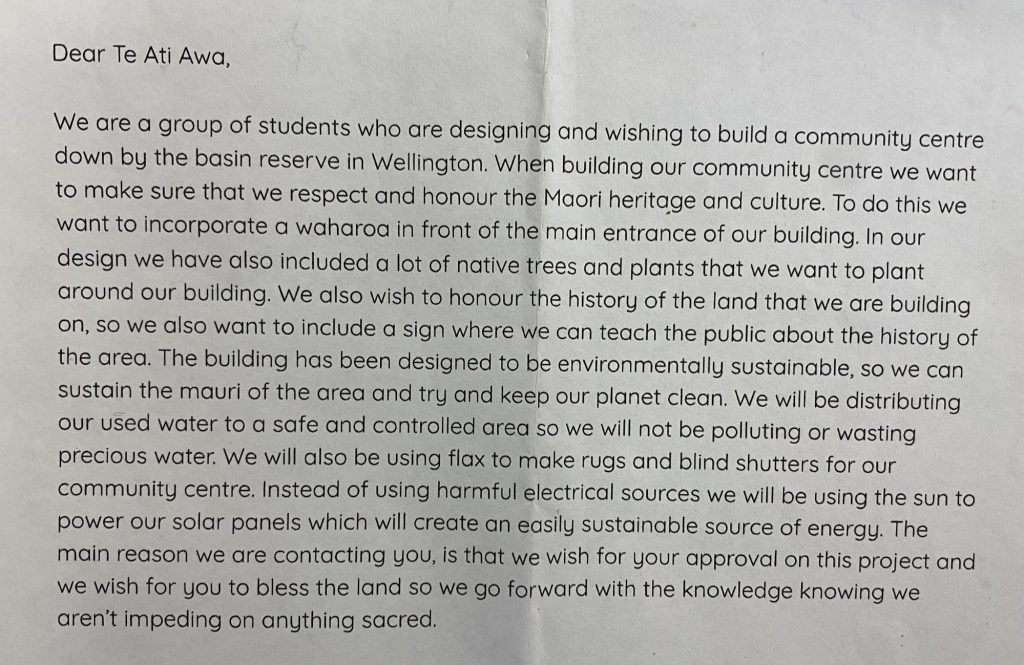
Students drafted letters to mana whenua explaining their design ideas. While these were not sent so as not to put an unnecessary burden on mana whenua, this is a way to practice correct tikanga.
Including courses specific to Māori and Pasifika knowledge
The inner-city secondary school has been working toward re-indigenising their science and social studies curricula and renaming social sciences as Tikanga-ā-Iwi. For two years now, they have been running a year 11 science course (SP100) specific to Māori and Pasifika knowledge, which links physics, earth and space science, biology and chemistry to navigation, volcanic studies and climate change. Students appreciate the opportunity to work holistically.
“SP100 teaches me about science, about New Zealand and the Pacific Islands and it helps connect me to my culture, which I haven’t really been doing, so this is a good chance for me to do it,” shared a student.
The College has been offering the unit in eco building for quite a few years – sometimes running it as a competition where classes compete to create the most sustainable buildings. Initially the learning involved mostly contemporary science ideas and building model houses. In 2020, each student took on a specialist role in a shared project (e.g. water engineer and architect). Within each role they explored both western science ideas and mātauranga pūtaiao before creating their final designs. They used the story “E moko” and an activity with different momo/types of wai from the Enviroschools Water of Life theme area, explored ideas about culturally sustainable architecture and carried out an ecological buildings survey from the Ecological Building theme area.
“We found the Enviroschools theme areas really useful – lots of activities can be adapted for secondary students. I also found my meeting with the facilitator vital to make sure I was on the right track, and also to talk with my class.” – Katherine Haines
Students learning about science and tikanga take action
The next step was for the year 10 students to take action in the environment based on the science and tikanga learnt in class. Taking part in a planting at the local wind energy farm with the Envirogroup from their school extended their understanding of mauri.
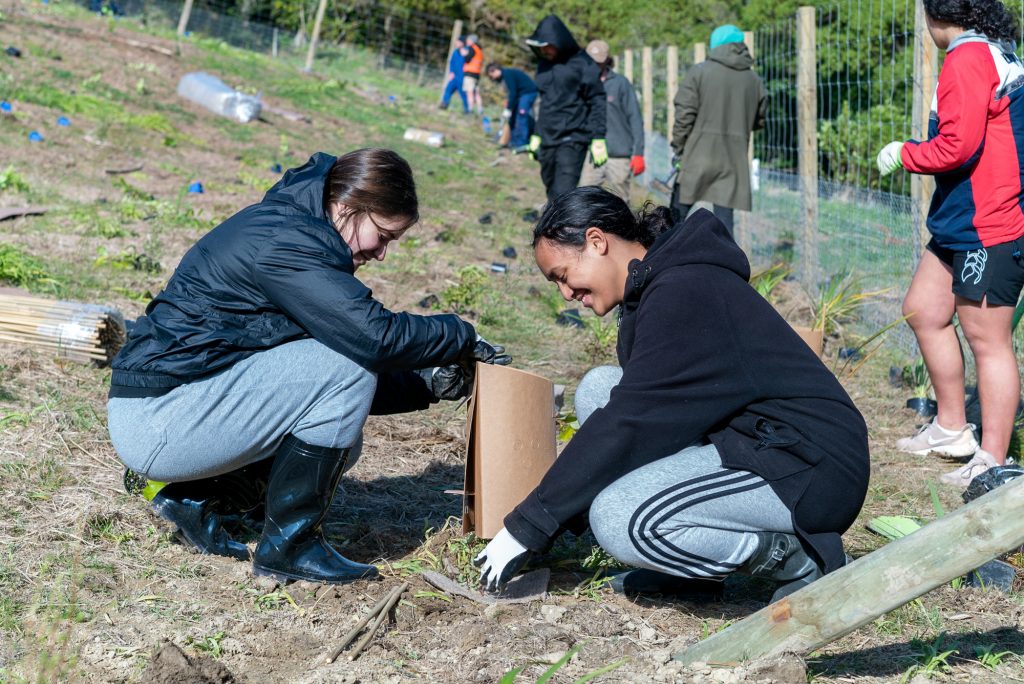
Giving back to the whenua at the local wind energy farm.
It was an opportunity to take into account the impact of placing new structures on the whenua, and mitigating that with positive action. The day included manaaki through sharing hangi and waiata while enhancing the biodiversity of a local place by planting hundreds of trees.
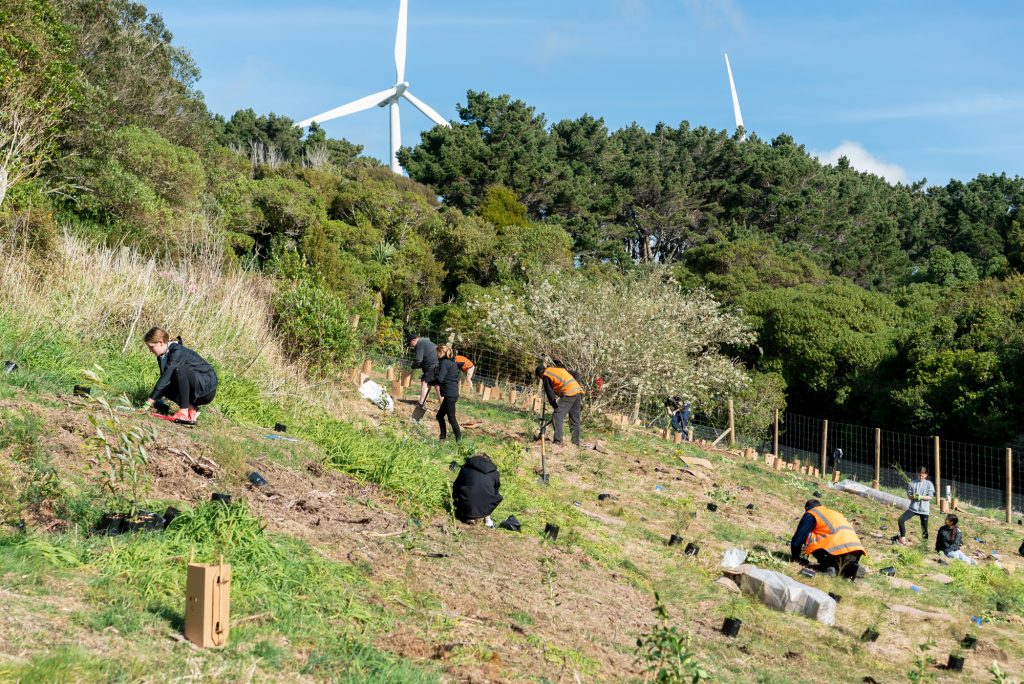
Caring for the land affected by new structures.
Student responses to participating in this learning were hugely positive with about a quarter of the class saying it was their favourite topic of the year. They shared that they loved learning about the environment and how to help it and that learning about both western science and mātauranga pūtaiao together was really important to them.

Niva So’o (left) and Ojhan Aukuso responded to a public debate about mātauranga Māori
This was particularly evident recently when year 11 students from WEGC responded publicly to a debate about mātauranga Maori as science and its role in our education curriculum. Find out more from the RNZ story here. Their experience, the students said, was that merging both sparked more interest.
Students believe both western science and indigenous science are needed to help solve world problems such as climate change, health issues and ecological issues.
Teachers committing to planning for a culturally sustaining pedagogy
Katherine Haines says that as a department they have a goal to include a mātauranga focus for one topic in each course. They also want every junior student to be exposed to Māori and Pasifika scientist role models. Although different teachers have different levels of confidence, she says all are making an effort with lots of teachers including environmentally focused topics in their junior courses.
The school has the benefit of a number of passionate enviro-teachers in the Science department and Enviroschools is a natural fit for progressing their journey.